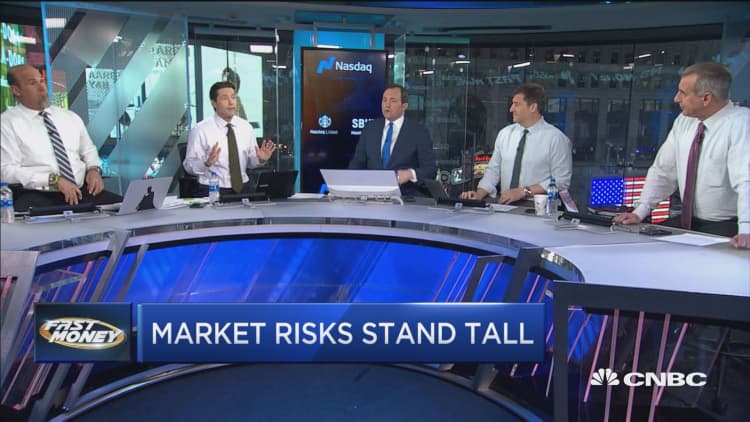Investors are buying into the riskiness of stocks, but they're also buying the security of the bond market.
That's not the usual course for markets, but it has happened before. The conflicting investment trend comes after the Federal Reserve made an about face on its tightening policy, making risk assets more attractive. It also comes as bond investors worry about spotty U.S. economic reports and signs of continued deterioration in manufacturing and consumer data in Europe and Asia.
What it may be signaling is an inflection point for markets.

"I think this time around, you can argue previous times have been different. If there's low inflation and good growth, people would happily be buying both markets," said Peter Boockvar, chief investment strategist at Bleakley Advisory Group. Boockvar said investors are buying the U.S. 10-year Treasury, as they also buy negatively yielding Japanese government bonds and the 10-year German bund, now yielding 0.17 percent. The U.S. 10-year was at 2.70 percent Tuesday.
"It tells you people are comfortably buying them at these yield levels. It's because they're worried about growth, and the equity market is rallying, not because things are good, but because of the Fed and optimism about a trade deal," said Boockvar.
Michael Schumacher, director rate strategy at Wells Fargo, said the buying in both markets could be resolved by a sell-off in bonds. Then yields, which move opposite price, could start to move higher again, and the 10-year could edge back over 3 percent.
"Its' s a little bit of a funky correlation. We've had both things rallying, which is strange. This is what happened in 2017, when all asset classes did well. In 2018, nothing did well," he said. "I would suspect it goes away soon. The Fed has certainly been equity friendly for the last little bit."
The was higher for a fifth day Tuesday, and was flirting with its 200-day moving average, at 2,741. The index closed at 2,737, up a half percent. The S&P is now 16.4 percent above its Dec. 24 closing low. If it rises above the 200-day and closes above it, it would be seen as a positive sign for momentum.
Scott Redler, partner with T3Live.com, said the 200-day is another point of reference for traders, and it would be a good spot for the market to pause and regroup. "In the past two weeks, there have been many points of reference where people thought the rally off the lows would have stalled. At this point, it would make sense to pause at the 200-day, but each time we think we're going to, different groups, different sectors keep advancing," said Redler.
He said banks stocks backed off after the Fed released a dovish statement last week, and the market further discounted the chances for a rate hike. "Tech and small caps took over ... with new power in Apple after its earnings," he said.
Redler said the "pain trade" is now for investors who have been underinvested or overhedged during the rally off the late December lows. "They sold too early or shorted too early," he said.
"At this point, there's definitely a FOMO [fear of missing out] feel. Investors that are underinvested are worried. … It probably doesn't feel that good for a lot of market participants. A pause here at the 200-day would be welcomed by the bulls and the bears," he said.
Boockvar, however, said the stock market could get ready to do something more extreme than just pause.
"We're at a key spot here. We had a rebound, and we just rallied back to the 200-day moving average. Now is the real test," said Boockvar. "Whether we go back to the lows remains to be seen, but this is the end of the post sell-off rally. … I say that because of what I see in earnings. Earnings season has been really mediocre. Earnings estimates are falling and growth for the full year continues to slow. There's a reduction in estimates. This remains a Fed relief rally predominantly, and not based on the fundamentals."



